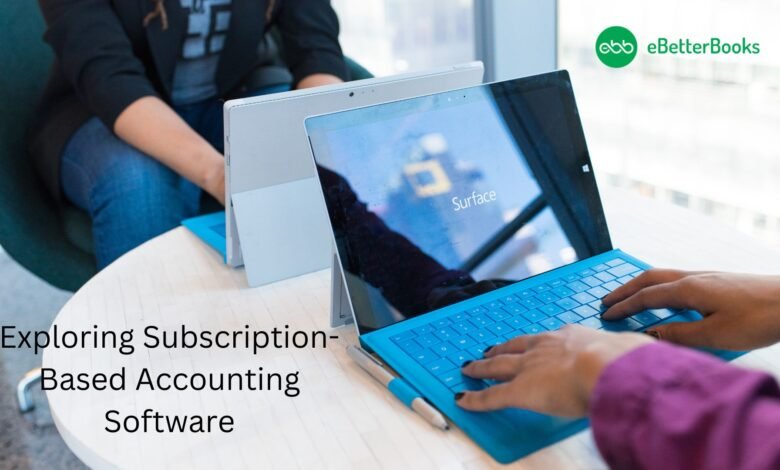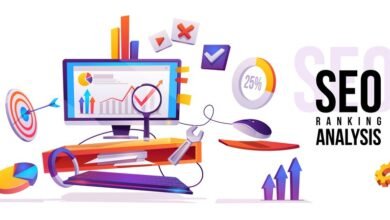
The rise of technology has revolutionized how businesses manage their finances. Among the most significant advancements is the shift toward subscription-based accounting software. This model not only transforms traditional accounting practices but also provides businesses with flexible, efficient, and cost-effective solutions. This article explores subscription-based accounting software, examining its models, benefits, drawbacks, user experiences, pricing comparisons, and future trends.
Overview of Subscription Models
Subscription-based accounting software typically operates on a recurring payment structure, allowing users to pay a monthly or annual fee for access to the software. This model contrasts with traditional accounting software, which often requires a one-time purchase and subsequent maintenance fees.
The subscription models can be classified into several categories:
1. Tiered Pricing Models
Many subscription-based accounting software platforms offer tiered pricing, where users can choose from different levels of service based on their business needs. Each tier typically includes varying features and support levels, allowing businesses to select a plan that aligns with their budget and operational requirements.
2. Freemium Models
Some accounting software providers offer a freemium model, allowing users to access basic features at no cost while charging for premium features. This model is particularly appealing to startups and small businesses looking to test the software without financial commitment.
3. Usage-Based Models
In this model, fees are determined by the actual usage of the software. Businesses that process a higher volume of transactions or require additional features pay more, making it a flexible option for companies with fluctuating needs.
4. Flat-Rate Models
A flat-rate subscription charges a fixed amount regardless of the number of users or features accessed. This model can simplify budgeting for companies and is often favored by larger organizations seeking predictability in their accounting expenses.
5. Bundled Services
Some accounting software subscriptions come bundled with additional services such as payroll, tax preparation, and consulting. These comprehensive packages can provide significant value for businesses looking for an all-in-one solution.
Key Benefits of Subscription Software
The subscription-based model offers several advantages, making it an attractive option for businesses of all sizes.
Here are some of the key benefits:
1. Cost-Effectiveness
One of the most significant advantages of subscription accounting software is its cost-effectiveness. Instead of paying a substantial upfront fee, businesses can manage their cash flow better by spreading costs over time. This is particularly beneficial for startups and small businesses that may have limited budgets.
2. Scalability
Subscription-based software is inherently scalable. As a business grows, it can easily upgrade to a higher tier or add more users without significant disruptions. This flexibility allows companies to adjust their software needs as their operations evolve.
3. Automatic Updates
Subscription models typically include automatic software updates, ensuring users have access to the latest features, security patches, and compliance updates. This reduces the burden on IT departments and ensures that businesses are always using the most current version of the software.
4. Cloud Accessibility
Most subscription-based accounting software is cloud-based, allowing users to access their financial data from anywhere with an internet connection. This is particularly advantageous for remote work environments and businesses with multiple locations.
5. Enhanced Security
With cloud-based solutions, accounting data is often stored on secure servers with robust security protocols. Many providers offer features like encryption, two-factor authentication, and regular backups, helping businesses protect sensitive financial information.
6. Integration with Other Tools
Many subscription accounting software solutions integrate seamlessly with other business tools, such as customer relationship management (CRM) systems, inventory management software, and payment processors. This integration enhances overall operational efficiency and data accuracy.
Common Drawbacks and Challenges
While subscription-based accounting software has numerous benefits, it also comes with challenges that businesses should consider:
1. Ongoing Costs
Although subscription fees may be lower initially, they can accumulate over time. Businesses need to evaluate whether the long-term costs align with their budget and whether they are getting sufficient value from the software.
2. Dependency on Internet Connectivity
Since most subscription accounting software is cloud-based, reliable internet access is essential. Any connectivity issues can disrupt access to critical financial data and impact business operations.
3. Limited Customization
Many subscription-based solutions offer standard features that may not meet the unique needs of every business. Customization options can be limited, requiring businesses with specific accounting needs to adapt their processes to the software.
4. Data Security Concerns
While many subscription services implement strong security measures, storing sensitive financial data in the cloud may raise concerns for some businesses. Companies must carefully assess the security protocols of their chosen provider.
5. Learning Curve
Transitioning to a new accounting system can involve a learning curve for employees. Businesses may need to invest time and resources in training to ensure staff can effectively use the software.
User Experiences and Feedback
User experiences with subscription-based accounting software can vary widely based on factors such as the specific software chosen, the size of the business, and the complexity of its accounting needs.
Here are some common themes in user feedback:
1. Ease of Use
Many users appreciate the user-friendly interfaces of subscription accounting software. Intuitive designs and dashboards make it easy for users to navigate and perform essential tasks without extensive training.
2. Responsive Customer Support
Users often highlight the importance of responsive customer support. Many subscription software providers offer comprehensive support through chat, phone, and email, helping businesses resolve issues quickly.
3. Positive Impact on Efficiency
Many businesses report increased efficiency in their accounting processes after switching to subscription-based software. Automation features, such as invoice generation and expense tracking, save time and reduce the potential for errors.
4. Integration Capabilities
Users frequently mention the value of seamless integration with other tools. This capability enables businesses to create a more cohesive tech stack, reducing data entry and improving overall productivity.
5. Customization Limitations
Some users express frustration with the limited customization options of certain subscription-based solutions. Businesses with unique accounting needs may find it challenging to adapt standard features to their workflows.
Pricing Comparisons
When evaluating subscription-based accounting software, pricing is a crucial consideration.
Here’s a comparison of popular platforms:
1. QuickBooks Online
- Pricing: Plans range from $30 to $180 per month, depending on features.
- Features: Offers extensive features, including invoicing, expense tracking, and payroll options.
2. Xero
- Pricing: Monthly plans start at $13 and go up to $70.
- Features: Known for its strong invoicing capabilities and ease of use.
3. FreshBooks
- Pricing: Plans start at $15 per month, scaling up to $50.
- Features: Ideal for small businesses and freelancers, emphasizing invoicing and time tracking.
4. Wave Accounting
- Pricing: Free for core features, with add-ons like payroll available for a fee.
- Features: A great choice for startups and small businesses on a budget.
5. Zoho Books
- Pricing: Plans range from $15 to $70 per month.
- Features: Comprehensive features suitable for small to medium-sized businesses, with strong automation capabilities.
Future Trends in Subscription Accounting
As technology continues to evolve, several trends are shaping the future of subscription-based accounting software:
1. Artificial Intelligence and Machine Learning
AI and machine learning are poised to enhance accounting software, enabling predictive analytics, automated data entry, and smarter financial reporting. These advancements will help businesses make more informed financial decisions.
2. Integration with Emerging Technologies
The integration of accounting software with technologies such as blockchain and the Internet of Things (IoT) is expected to grow. These technologies can improve transparency and data accuracy, revolutionizing how businesses manage their finances.
3. Increased Focus on Compliance and Regulation
With ever-changing financial regulations, subscription accounting software will increasingly emphasize compliance features. This will help businesses navigate complex tax laws and reporting requirements more efficiently.
4. Enhanced User Experiences
User experience will continue to be a priority, with providers focusing on intuitive designs and customizable dashboards. Improved user interfaces will make it easier for businesses to manage their finances effectively.
5. Remote Collaboration Features
As remote work becomes more prevalent, subscription accounting software will likely incorporate enhanced collaboration features, allowing teams to work together seamlessly, regardless of their physical location.
Conclusion
Subscription-based accounting software represents a significant shift in how businesses approach financial management. With various subscription models, key benefits, and challenges, businesses must carefully evaluate their options to find the right solution.
The positive user experiences, along with competitive pricing, make subscription accounting software an appealing choice for many organizations. As technology continues to advance, we can expect exciting developments in this space, paving the way for more efficient and effective financial management solutions.
See also: Comparing On-Premise vs. Cloud Accounting Software
FAQs
What is subscription-based accounting software?
Subscription-based accounting software is a cloud-based solution that allows businesses to manage their financial activities by paying a recurring fee, typically monthly or annually. This model contrasts with traditional accounting software, which requires a one-time purchase.
What are the key benefits of using subscription accounting software?
The key benefits include cost-effectiveness, scalability, automatic updates, cloud accessibility, enhanced security, and integration with other business tools.
Are there any drawbacks to subscription accounting software?
Yes, some drawbacks include ongoing costs that may accumulate over time, dependency on internet connectivity, limited customization options, potential data security concerns, and a learning curve during the transition.
How does subscription-based pricing compare to traditional software pricing?
Subscription-based pricing typically involves lower initial costs, allowing businesses to spread payments over time. In contrast, traditional software requires a significant upfront investment, along with potential maintenance fees.
What trends are shaping the future of subscription accounting software?
Key trends include the integration of artificial intelligence and machine learning, enhanced compliance features, improved user experiences, and increased remote collaboration capabilities.
Visit here: Importance of User Training in Accounting Software


